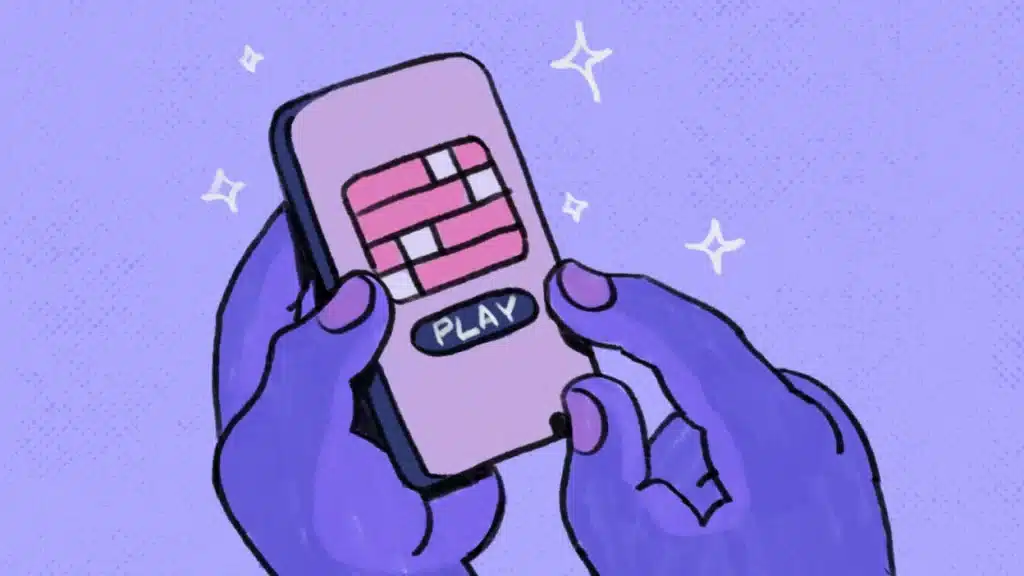If you’re one of the many puzzle enthusiasts eagerly awaiting today’s NYT Connections puzzle, you’re in the right place. In this post, we’ll delve into the hints, breakdowns, and puzzle-solving techniques that will help you navigate today’s game, while providing comprehensive details about the categories, words, and tricky connections.
This in-depth guide is tailored for both beginners and seasoned puzzle-solvers, ensuring that you walk away with useful connections hints and strategies for success.
Quick Overview of Today’s Puzzle
Today’s NYT Connections puzzle comes with a moderate challenge level. If you’ve been playing regularly, you might find some familiar word patterns while also facing a few curveballs that test your puzzle-solving skills. The puzzle board is filled with words that, at first glance, might seem to belong in multiple categories, but with the right strategy, you can confidently categorize each word and unlock the solution.
Difficulty Level: Medium
- This puzzle is challenging but not overwhelming. The clues are designed to make you think outside the box, and you may encounter semantic relationships that are not immediately obvious. While the categories are clear once identified, the word associations can be tricky.
- If you’ve been playing for a while, expect to spend a good chunk of time on this one, as it requires both strategy and a solid understanding of word categorization.
Spoiler-Free Theme Hints
Here are some helpful connections hints that will guide you toward solving today’s puzzle, without spoiling the answers. These tips will help you focus on the puzzle categories and think about word association in a way that makes solving the puzzle feel like a rewarding challenge.
- Look for semantic relationships between words in each group.
- Some words may have multiple meanings, but their connection lies in a specific context.
- Themes may involve recent trends, cultural references, or even historical connections that tie the words together.
- Think about how words are commonly grouped in daily life, whether it’s in pop culture, science, or geography.
Tricky Words to Watch Out For
There are always words that seem to fit in multiple word groupings, and today’s puzzle is no different. Here are some tricky words to keep an eye on as you solve:
- Multiple Meaning Words: Words that seem to belong to more than one group. For instance, a word like “lead” can refer to a metal or the act of guiding, making it harder to categorize at first.
- Similar Sounding Words: Some words may sound similar but belong in different categories. This can throw off players who rely on phonetic patterns.
- Cultural References: Certain words may seem out of place but are tied to specific cultural references, making them essential for solving a theme.
Category Breakdown (Spoiler Warning)
Now let’s get into the categories of today’s puzzle, which will give you insight into the connections between the words. Understanding the game categories will allow you to focus on finding patterns based on categorization.
Category 1: Science & Nature
This category is all about words related to natural elements, plants, animals, and scientific principles. The word association here is straightforward but might include obscure terms that only become clear once you start grouping other words.
Category 2: Pop Culture & Entertainment
Expect to find words tied to famous personalities, movies, TV shows, and music. The trick with this category is identifying modern-day figures and iconic terms that cross entertainment mediums.
Category 3: Geography & Locations
This group might be filled with terms referring to countries, cities, and landmarks. Geography lovers will find this category easy to spot, but the challenge will lie in distinguishing between terms that overlap with other categories like history or culture.
Category 4: History & Politics
This category focuses on past events, historical figures, and political movements. Words may include names of significant political leaders or key historical terms.
Yellow Category – Easiest Group
This group of words is the simplest to solve. These are generally straightforward associations, and you will likely identify the connections early on. Here’s a deeper look into the yellow category:
- Theme: Elements of daily life
- Words: Clock, Knife, Chair, Plate
- Connection: These words represent common household objects found in every home. If you break them down, each is an item that serves a clear purpose in daily life.
Green Category – Second Easiest
A step up in difficulty, the green category requires a little more thought. But once you recognize the pattern, it’s smooth sailing.
- Theme: Common professions
- Words: Teacher, Pilot, Chef, Doctor
- Connection: These words represent people who are known for their specialized roles in society, focusing on professions that require specific skills and training.
Blue Category – Second Hardest
Here, you’ll encounter words that don’t seem to fit at first. The blue category might challenge your categorization abilities, as the words may seem linked by different themes.
- Theme: Nature’s Forces
- Words: Wind, Fire, Earth, Water
- Connection: These represent the classical elements, vital to earth science and nature studies. The challenge lies in categorizing them alongside other seemingly similar words.
Purple Category – Hardest Group
The final group might leave you scratching your head, as it includes words that fit into niche or more complex word associations.
- Theme: Literary Genres
- Words: Mystery, Romance, Thriller, Fantasy
- Connection: These words are all different genres of literature. The subtle challenge here is the overlap with terms found in pop culture or entertainment, which might distract you.
Word Groupings That Might Have Thrown You Off
As you solve, some words may initially appear to belong in different categories. This is part of the fun — and challenge — of NYT Connections. For instance, the word “doctor” might have seemed to fit into the history category, given famous figures like Dr. Martin Luther King Jr., but it belongs in the profession group.
My Strategy for Solving Today’s Puzzle
When I tackled today’s puzzle, I focused on the following strategy:
- Identify Familiar Words: I started with the words I knew best — the ones with obvious connections. This helped me narrow down the options and spot the categories quicker.
- Use Process of Elimination: For harder categories, I eliminated words that didn’t fit, helping me isolate the more obvious groupings.
- Check for Overlaps: Once I had a few words grouped, I tested the remaining words to see if any overlapped with multiple groups.
- Trust the Clues: Even if a word doesn’t make sense at first, trust the connections hint and the overall theme. Eventually, things clicked.
What Makes Today’s Connections Unique?
Today’s puzzle felt particularly well-balanced, with categories ranging from everyday items to more challenging, abstract themes like literary genres and nature’s forces. What stood out was the semantic relationship between words, particularly in the blue and purple categories, which made me think outside of the box.
How to Play NYT Connections (For Newcomers)
If you’re new to NYT Connections, here’s a quick guide:
- Start by identifying groups of four: You have 16 words to organize into four groups of four. The words can be related by themes, categories, or even abstract ideas.
- Look for common links: Words within a group will share a distinct connection. It could be based on word categorization, cognitive patterns, or semantic relationships.
- Color Coding: Once a group is correctly formed, the words will change color (yellow, green, blue, or purple). These colors help you visually track progress and guide you through the puzzle.
Best Tips to Win at NYT Connections
- Think Outside the Box: Don’t just rely on surface-level connections. Look for deeper semantic relationships.
- Group Words by Context: Focus on context — how words are used in the real world, in media, or within specific industries.
- Trust Your Instincts: Sometimes your first hunch is right. If a word doesn’t feel like it belongs, it likely doesn’t.
- Practice Categorization: The more you play, the better you’ll get at spotting word patterns and forming groups quickly.
Frequently Asked Questions
- What time does Connections reset daily?
The NYT Connections puzzle resets every day at midnight, New York time. - Can I play old puzzles?
Yes, old puzzles can be found in the NYT Games archive. - How are colors assigned?
Colors are assigned based on your progress: green means a correct group, blue and purple show different levels of difficulty, and yellow is for easy connections. - Where can I find today’s puzzle?
You can find the NYT Connections puzzle in the Games section of the New York Times website or app.
Play Today’s NYT Connections Puzzle Online
Ready to try your hand at today’s puzzle? Play now on the official NYT Games platform:
Play the NYT Connections Puzzle
By following these tips and using the provided connections hints, you’ll improve your chances of solving today’s NYT Connections puzzle with ease. Remember, practice makes perfect, so keep playing, and soon you’ll be solving puzzles like a pro!
Frequently asked Questions
Connections Hint
A “Connections Hint” is a clue that helps you categorize words into four distinct groups in the NYT Connections puzzle. It serves as a guide to identify the correct word associations and semantic relationships between the words.
Connections Hints
Connections Hints offer specific suggestions that can guide your puzzle-solving journey. These hints often involve word categorization and help you identify patterns or groups in today’s puzzle.
Mashable Connections Hint Today
The Mashable Connections Hint Today provides additional context and strategies for solving today’s NYT Connections puzzle. It typically offers insights into the possible categories and word groupings to look out for during the game.
Connections Hint Today Mashable
When you search for Connections Hint Today Mashable, you’ll find an analysis of the daily puzzle and expert suggestions on tackling the puzzle efficiently. It helps readers focus on tricky game board areas and tile selection.
Connections Hint Mashable
The Connections Hint Mashable is a resource that offers puzzle-solving advice and detailed breakdowns for each day’s puzzle. It offers categorization tips and helps players improve their game-solving algorithms for more efficient solutions.
Conclusion
mastering the NYT Connections puzzle requires a strategic approach and understanding of the hints provided each day. Whether you’re using general connections hints or relying on specialized insights from Mashable, each clue brings you closer to successfully categorizing words into their correct groups.
By utilizing these hints and developing a keen sense of word association and semantic relationships, you can improve your puzzle-solving skills over time.
The key to winning at Connections is not just about getting the right answers but also about learning from your mistakes. As you practice and refine your puzzle-solving techniques, the game becomes more intuitive.
With consistent use of puzzle-solving patterns and categorization strategies, you’ll begin to recognize trends and develop a deeper understanding of the game. Remember, each puzzle is a new challenge, and with the right tools and mindset, you’re bound to get better each day.







